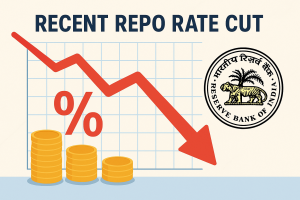In the heart of India, a silent yet deadly menace lurks in the form of air pollution, painting a bleak picture of the national capital, Delhi. As we delve into the distressing reality of Delhi air quality, we find ourselves amidst a crisis that calls for immediate attention and collective action.
The AQI Full Form: Saga Unfolds
The Delhi pollution news today is disheartening – “Air quality ‘severe,’ schools closed; expert warns of ‘remodeling of lungs’ in infants.” The Air Quality Index (AQI) in Delhi-NCR breached the ominous ‘400’ mark on a scale of 500, with readings reaching alarming levels in various areas, leaving residents gasping for fresh air. Anand Vihar station, Punjabi Bagh station, and Mundka station – all reported AQI levels in the ‘severe‘ category, surpassing the 400 AQI mark, as per the Central Pollution Control Board (CPCB).
A Drastic Step: School Shutdown
The Delhi pollution level today has forced authorities to make a tough call – shutting down schools in Delhi for two days, safeguarding the health of students, who are among the most vulnerable to the harmful effects of air pollution. The rationale behind this decision becomes evident when we delve into the gravity of the situation. After this, reports are being checked for AQI Greater Noida West, AQI Ghaziabad, and AQI Gurugram.
Emerging Threats and Warnings
Government agencies have sounded the alarm, cautioning that pollution levels are likely to worsen over the next 15-20 days. Several factors contribute to this impending crisis: a surge in farm fires, a drop-in temperature, and reduced airspeed creating the perfect storm for smog to envelop the capital city.
The perilous concentration of PM2.5, particulate matter with a diameter of 2.5 micrometers or less, has skyrocketed to levels seven to eight times higher than the safe limit of 60 micrograms per cubic meter. This airborne menace is a known trigger for a wide array of respiratory and health problems, putting the lives of Delhi’s residents in jeopardy.

Stubble Burning – A Significant Culprit
The smoke from stubble burning in neighboring regions accounts for a substantial chunk of the PM2.5 pollution in Delhi. On November 2, it constituted a staggering 25% of the overall pollution, and the situation is projected to worsen, with expectations of it reaching 35% today. This alarming statistic underscores the importance of tackling the issue at a regional level, as pollution knows no borders.
NGT News Delhi-NCR Today: Swift Action
In light of the escalating crisis, the National Green Tribunal (NGT) has imposed a ban on non-essential construction work, recognizing the role such activities play in exacerbating air pollution. This NGT ban in Delhi-NCR 2023 comes as part of a broader initiative to mitigate the pollution crisis. The NGT’s stance on construction activities is a step in the right direction, emphasizing the need for comprehensive and immediate measures to alleviate the dire situation.
A Glimpse into the Future
The ongoing smoky haze that blankets the Delhi skyline serves as a stark reminder of the challenges posed by air pollution. As we look ahead, it is crucial to address the root causes, implement long-term solutions, and work collectively to reduce the burden on the city’s residents, especially the vulnerable segments like children and the elderly.
The AQI Dilemma
The Air Quality Index (AQI), often abbreviated as AQI, serves as a vital tool to gauge the quality of the air we breathe. This index, which ranges from 0 to 500, classifies air quality into categories, with lower values signifying cleaner air and higher values indicating pollution levels that can pose health risks. The deteriorating Air Quality Index chart in Delhi is a wake-up call for all of us to prioritize clean air as a fundamental human right.
In conclusion, the deteriorating air quality in Delhi-NCR is not just a local issue but a national crisis that demands our immediate attention. It’s a call for collective action, stringent measures, and public awareness to ensure that the citizens of Delhi can breathe clean and safe air once more. The time to act is now before the ‘remodeling of lungs’ in infants becomes a grim reality, and the AQI chart spells catastrophe for the entire region. The authorities have released the NGT ban on construction in Delhi-NCR 2023 PDF to provide better information to citizens.










